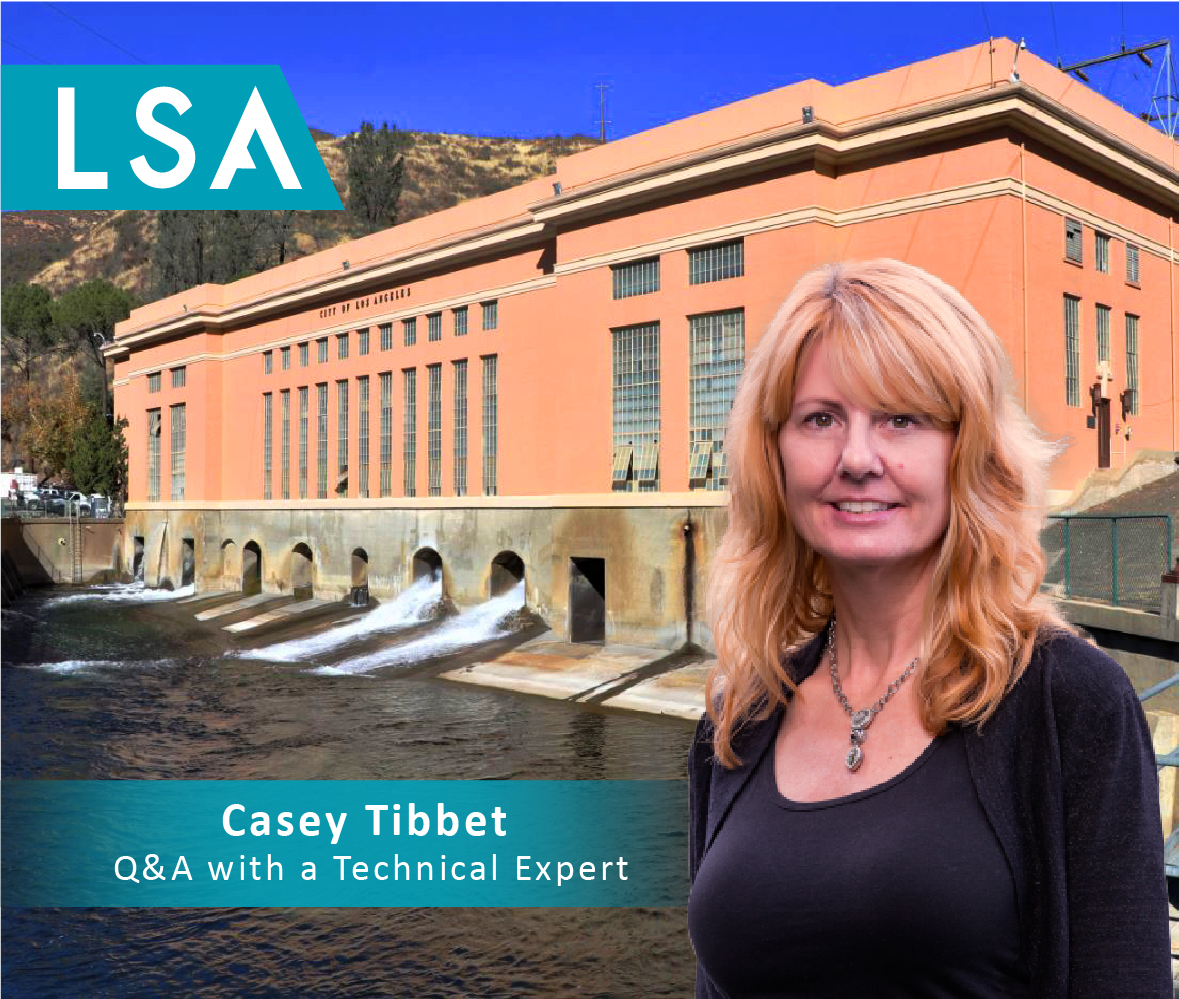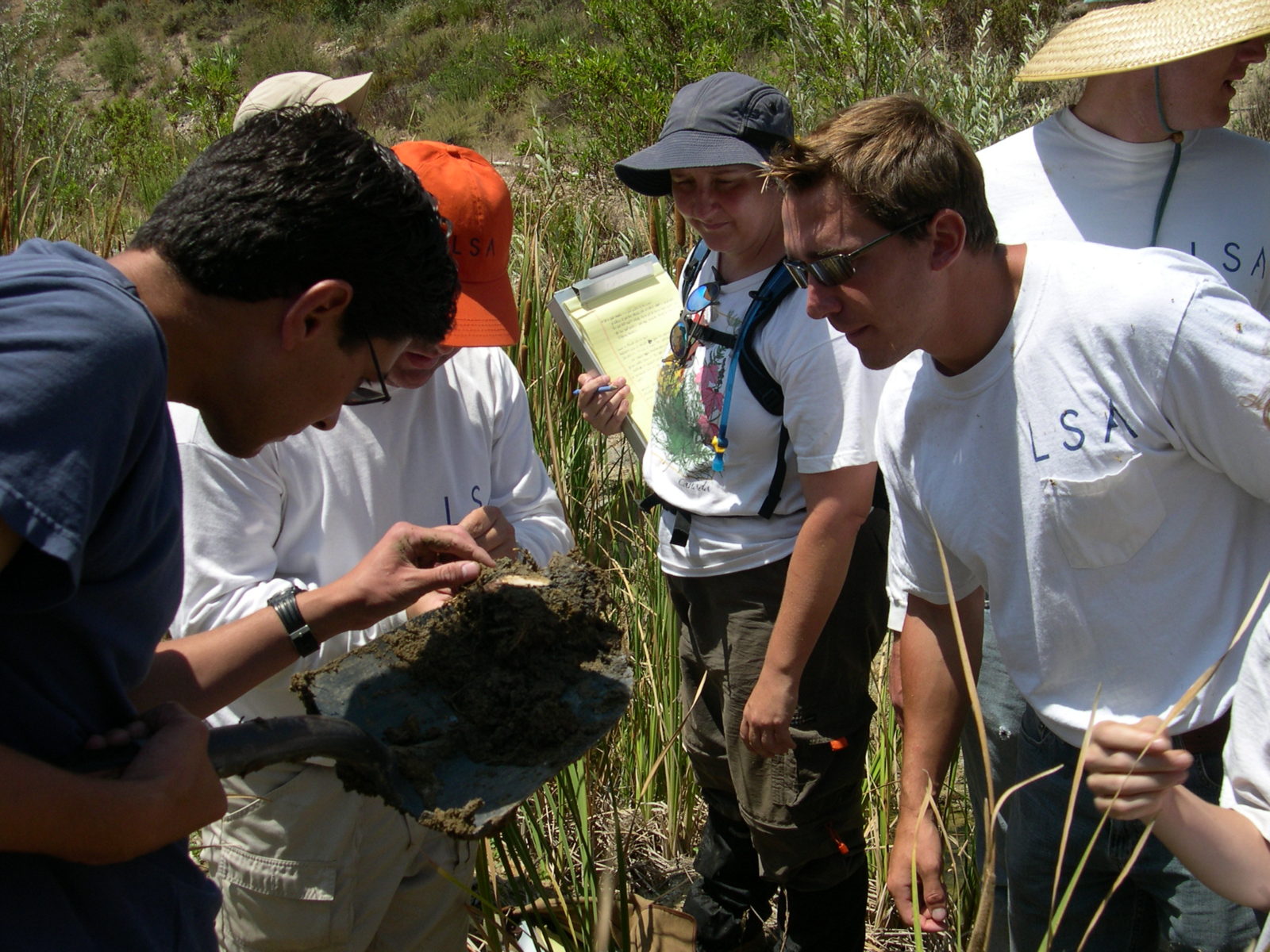Learn more about architectural history with award-winning Associate/Architectural Historian Casey Tibbet! Ms. Tibbet has more…
Cultural Resources at LSA

LSA has the technical ability, professional certifications, and regulatory experience needed to address today’s diverse cultural resource planning and regulatory requirements. LSA works on complex, multiagency projects in a variety of environmental settings and efficiently conducts high-quality technical analyses to satisfy Section 106 of the National Historic Preservation Act (Section 106), the California Environmental Quality Act (CEQA), and local agency review.
Cultural resources embody common history, collective memory, and the traces of cultures that have left a physical mark on the natural world. Their value can be based in traditional cultural value, such as with ancestral village sites or basketry-gathering locations, or in their ability to answer important questions about the nature of humans’ interactions with their environment, such as with precontact archaeological sites or historic-period architecture. Consultation and transparent collaboration with descendant groups and interested stakeholders are the game changers; cultural resources management benefits from and is strengthened by the input of those communities invested in the resources that LSA documents and treats.
LSA staff members are certified in archaeology, history, and planning and serve a diversity of planning, engineering, governmental, and development clients. As a distinguishing attribute, LSA has worked with, and continues to enjoy good relationships with, dozens of California tribal groups and historical societies. Some of the specific services LSA provides include the following:

- Phase I, II, and III archaeological studies
- Architectural history studies
- National Register of Historic Places (National Register), California Register of Historical Resources, and local register eligibility evaluations
- Compliance with the National Environmental Policy Act (NEPA), Section 106, and CEQA
- Archaeological and paleontological data recovery and impact mitigation
- Documentation and evaluation of historical buildings, structures, and objects
- Archaeological and paleontological construction monitoring
- Aerial drone imagery site mapping and documentation
- Historic American Building Survey/Historic American Engineering Record (HABS/HAER) large-format photographic documentation
- Human burial recovery
- Artifact reproduction services
- Native American coordination and consultation
- Resource agency consultation and consensus building
Cultural Resources Principals and Project Managers
Related Projects
El Casco System Substation, Riverside and San Bernardino Counties, California
LSA worked for Southern California Edison (SCE) and conducted archaeological surveys of more than 25 linear miles for multiple substation and reconductor line alternatives. LSA later conducted archaeological monitoring during construction, during which a historic-period archaeological site was identified and recorded.
Laguna Canyon Road (State Route 133) Widening and Realignment Project, Orange County, California
LSA conducted initial archaeological pedestrian surveys for the widening and realignment project and conducted archaeological data recovery during project development phases. LSA’s archaeological monitoring during construction resulted in the need for archaeological data recovery. LSA worked in tandem with the federal lead agency (Caltrans District 12, as designated by the Federal Highway Administration) to mitigate cultural resources identified midproject.
Geysers Recharge Project, Sonoma and Lake Counties, California
LSA provided cultural resources consulting services for the City of Santa Rosa Geysers Recharge Project, a $200,000,000 project that constructed a 41-mile pipeline to transport highly treated wastewater from the City of Santa Rosa’s treatment plant to The Geysers (the world’s largest geothermal field, located in the Mayacamas Mountains) to recharge geothermal steamfields for the production of electricity. This multiyear project had a significant cultural resources element that included inventory, evaluations, mitigation, and monitoring. The cultural resources addressed included prehistoric and historical archaeological sites, historical architecture, and paleontology. LSA’s responsibilities included all aspects of addressing the requirements of Section 106 and the cultural resource requirements of CEQA. The cultural resources element included coordination with the Army Corps of Engineers, the Bureau of Land Management, the Office of Historic Preservation, and the State Water Resources Control Board. The cultural resources element also included coordination with historical organizations and consultation with Native American groups.
Leviathan Peak Telecommunications Project, Alpine County, California
LSA conducted a cultural resources study for a project that constructed new and improved telecommunications facilities on the summit of Leviathan Peak in Alpine County, California. The project included construction of a 6.2-mile-long electrical power alignment that runs from the summit of Leviathan Peak through United States Forest Service (USFS) land to a commercial power line in Douglas County, Nevada. The new facilities consist of a generator vault, a transmission tower, and associated improvements. Because the project was subject to USFS permitting requirements, the study was done to address Section 106. LSA conducted records searches at the Central California Information Center and the State of Nevada Cultural Resources Information System, background research using archival sources at LSA, field surveys, and National Register evaluations of cultural resources identified within the Area of Potential Effects (APE). The identification tasks and results of the evaluations were documented in two draft reports—one for the California portion of the APE and the other for the Nevada portion—for submittal to the Humboldt-Toiyabe National Forest. The reports were approved by USFS professionally qualified staff.


